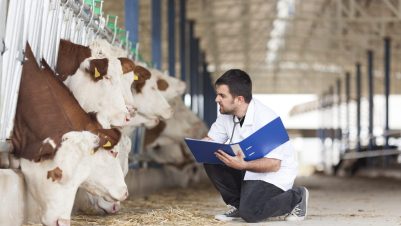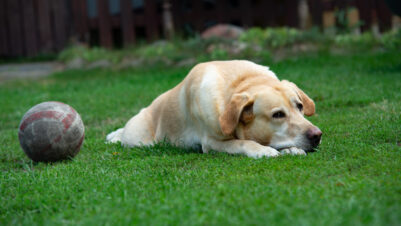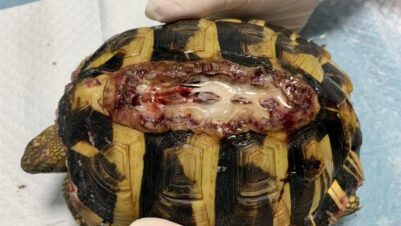Over the winter period traditionally dairy farmers are active with courses and meetings, but when the cows are turned out it is thought difficult to draw them in from the field. This may now be another rural myth as the whole industry has become highly professional.
Veterinary practices are part of the support for production, health and welfare, and if the vet is not providing activity in a problem area then the farmer will seek out solutions from other sources. In particular, rural colleges are partnering with veterinary universities and specialists to conduct research. Their strength is that they are closer to the farmer and the interpretation of information and data enables in-depth findings to be discussed and promoted more easily.
The days of two or three years of veterinary project work followed by two years of analysis and then a paper in the Vet Record may still take place, but the early release of findings and how the new work fits in with old understandings is increasingly sought. At a recent research day at the Duchy College in Cornwall, farmers and vets were regaled with the latest findings on calf care, protein usage, painful feet and genetics.
Correct nutrition as the starting point
It is worth noting that the Clean Air Act, to reduce particulates from wood-burning stoves and diesel, also includes ammonia. Much work is ongoing to allow the cow to utilise more of the food with less urea excreted and, therefore, less ammonia released. Dietary changes are being advised and vets are encouraged to be aware of any health issues that may arise. Similarly, the erection of new buildings and forthcoming grants may be seen as a way out of calf disease, but the veterinary view is that correct feeding is the starting point. Good calves can come from poor housing and sickly calves from good housing, and ultimately, successful calf rearing emphasises the value of a good start in early life.
The various indices that are now available for bull selection may allow herd improvements over time but correctly identifying health issues is highly important with veterinary input for future development a key part of the plan. The depth of interest from farmers, in level-headed progress, is evident.
Improving our knowledge on painful feet
Milk buyers do not like the notion that the cows providing the milk for their customers are in pain from sore feet. However, there does not appear to be an acceptable level of pain for cows within a herd. Relieving pain in individuals has been one focus but enabling the cow to walk, eat and produce milk has often been the aim rather than reducing pain. The best treatment regime is expected to return a cow to full capacity in a matter of weeks, but the repair approach has to be combined with effective prevention. Listening to researchers explaining that the lameness in a herd has been reduced from 30 percent to 20 percent may be seen as an economic benefit, but to have one in five of a herd suffering pain is not good enough.
Relieving pain in individuals has been one focus but enabling the cow to walk, eat and produce milk has often been the aim rather than reducing pain
Reducing painful feet in a commercial dairy herd is a real challenge and well recognised by vets in practice. Combining the knowledge and awareness of all those involved with cows’ feet has opened up potential benefits, with some significant contributions from research. For example, research from the University of Liverpool, Royal Veterinary College and Scotland’s Rural College has furthered understanding of the genomic resistance to claw horn disruption lesions in dairy cattle (Griffiths et al., 2020). Indications are that the sole soft tissues (fat pads) are at their thinnest around calving with first lactation animals having significantly thinner sole soft tissues than older counterparts. Further, first lactation animals that develop a sole ulcer have thinner pads immediately after calving. As such, it is indicated that fresh cow management and heifer management are important stages for managing the risk of lameness in the production cycle of dairy cows.
According to Wilson et al. (2021), the presence of claw horn lesions is likely to predispose an animal to future claw horn lesions through the depletion of digital cushion adipose tissue. Indications are that “genetically selecting more robust animals and pre-conditioning the hoof before first calving would reduce the risk of future lesions”.
It is indicated that NSAID use minimises the effect calving has on the functional anatomy of the foot
This background understanding has led to prevention regimes. Although there is talk of “appears to” and “we believe”, the administration of NSAIDs at calving and when treating for lameness is the way forward, with NSAIDs to be given at the first and every calving and at every lameness event. It is indicated that NSAID use minimises the effect calving has on the functional anatomy of the foot. At the research day, there was also recognition that disinfection is a vital part of tackling bovine digital dermatitis (BDD) as it reduces the risk of spreading Treponema between dairy cows on hoof knives.
Hoof trimming training
Preventive hoof trimming is recognised as reducing the incidence and severity of lameness. The aim is to intervene before a sole ulcer appears. Professional hoof trimmers attend to many thousands of cattle hooves and they are combining forces with vets to improve matters. Since it was introduced last year, the first aid for feet initiative has attracted many veterinary practices to work with the Cattle Hoof Care Standards Board (CHCSB) to be LANTRA-approved and accredited foot health trainers. Through the veterinary practice, individuals on a farm can be trained to become confident to lift and examine the hoof of a cow with reduced mobility. The aim is to have the earliest possible intervention for the benefit of the cow.
The CHCSB management has worked hard to develop a robust set of standards for professional cattle hoof trimming. There are various levels of training and registration, including a five-day course using cadavers, with an observation of technique and recording of 1,000 cows attended. Registration is required annually with further appraisal. There are non-registered hoof trimmers, but this part of the dairy industry has moved up a gear. Farmers are recognising the value of having a standardised approach and the involvement of a certified trimmer with their veterinary practice.
Farmers are recognising the value of having a standardised approach and the involvement of a certified trimmer with their veterinary practice
In parallel, there is a register of trained mobility scorers with approaching 1,000 members who are supported by nearly 200 mobility mentors encouraging the use of the Agriculture and Horticulture Development Board (AHDB) mobility scoring system. Information from the field will enable progress to be monitored with a move towards a standardised mobility score on a 0 to 3 scale.
Final thoughts
This increasing collaboration between farmers, veterinary surgeons and hoof trimmers, to recognise and intervene with lameness as early as possible, has highlighted the need to redefine the act of veterinary surgery
This increasing collaboration between farmers, veterinary surgeons and hoof trimmers, to recognise and intervene with lameness as early as possible, has highlighted the need to redefine the act of veterinary surgery. It seems that an Act of Parliament is required to enable whoever is with the cow to offer immediate therapy, if that person is not a veterinary surgeon. With health plans and agreed use of therapy by the veterinary practice and the farmer nowadays, there could be a practical revision of the Veterinary Surgeons Act, which was laid out over 50 years ago. Whatever the legal outcome it is very positive to learn of enhanced collaboration between vets and trimmers and the possibility of reduced incidences of hoof pain.
| The author would like to thank Dr Nick Bell and Dr James Wilson for sharing their awareness and expertise |











